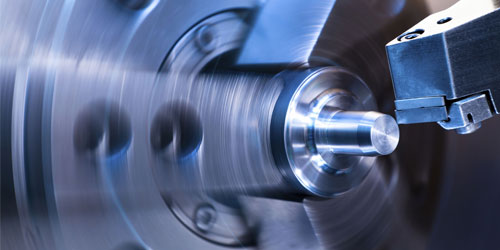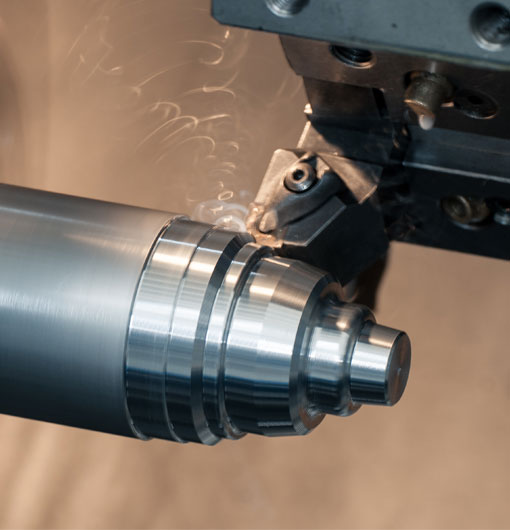As the demand for precision and efficiency in manufacturing continues to rise, Computer Numerical Control (CNC) turning tools have become an indispensable part of the modern workshop. Used in the production of components with different shapes, sizes, and materials, CNC turning tools are highly versatile and customizable. In this blog post, we will delve into the intricacies of CNC turning tools, providing a comprehensive guide for optimizing their use in various applications.
\Understanding CNC Turning Tools\
CNC turning tools are cutting tools used in CNC lathes, which are designed to remove material from a workpiece through a process called turning. As the workpiece rotates, the CNC tool moves along its surface, cutting away material to form the desired shape. It is important to understand how these tools function, as well as the various types of CNC turning tools available, in order to select the most suitable tool for a particular application.
\Types of CNC Turning Tools\
There are several types of CNC turning tools, each designed for specific applications. Let's take a closer look at some of the most common types:
1. External Turning Tools: As the name suggests, these tools are used for turning the external surface of a workpiece. They come in various shapes and sizes, with the most common ones being straight, offset, and cranked tools.
2. Internal Turning Tools: These tools are designed to turn the internal surface of a workpiece, such as a hole or a groove. They generally have slender and long shanks to reach inside the workpiece.
3. Facing Tools: Used to face or create flat surfaces on a workpiece, these tools have a squared-off end designed to create a smooth and accurate surface.
4. Boring Tools: Boring tools are used to enlarge existing holes in a workpiece. They remove material from the inner walls, creating a smooth and accurate finish.
5. Parting Tools: These tools are used to separate a finished part from the rest of the workpiece. They have a thin, sharp tip that is designed to cut through the material cleanly and precisely.
6. Thread Cutting Tools: Designed to create threads on a workpiece, these tools can form both internal and external threads.
\Selecting the Right Turning Tool\
Selecting the appropriate CNC turning tool for your project requires considering several factors:
1. Material: Different materials will have an impact on the choice of turning tool. Material properties such as hardness, strength, and machinability should be taken into account. For example, the use of carbide cutting tools may be suitable for harder materials, while high-speed steel tools can be used for softer materials.
2. Surface Finish and Tolerance: The required surface finish and tolerance of your part must be considered when selecting a turning tool. Some tools produce finer finishes, while others may be better suited for roughing operations.
3. Tool Life: The durability and wear resistance of your turning tool need to be taken into account. A longer-lasting tool may be more cost-effective in the long run.
4. Tool Geometry: The geometry of a turning tool, such as the tool's cutting edge angle, rake angle, and clearance angle, can make a significant difference in the efficiency and quality of the finished part. Be sure to select a tool with the appropriate geometry for your specific application.
5. Feed and Speed: Balancing feed rate and cutting speed is essential for optimizing tool life, surface finish, and overall productivity. Aim for the right balance depending on the tool material, geometry, and workpiece material.
\CNC Turning Tool Holders\
The tool holder is another crucial component in the CNC turning process. It securely holds the cutting tool and ensures proper alignment, rigidity, and repeatability. Different tool holders are designed for different applications, and their selection is largely influenced by factors such as the type of turning tool, tool geometry, and material.
\Sharpening and Maintenance\
To prolong the life of your CNC turning tool and ensure consistent performance, proper sharpening and maintenance are essential. Regularly inspect your tools for signs of wear, like chipping or dullness. Properly sharpen and maintain cutting edges to prevent premature tool failure and maintain the quality of your workpieces.
\Integrating CAD and CAM Software\
Computer-Aided Design (CAD) and Computer-Aided Manufacturing (CAM) software are indispensable tools for optimizing the performance of your CNC turning tools. These software suites help create part geometries, generate toolpaths, and produce machine code that directs the CNC lathe. Leveraging CAD/CAM software can lead to increased efficiency and higher quality parts, and save time during the setup and machining processes.
\Adopting Industry 4.0 Technologies\
Embracing Industry 4.0 technologies in your CNC turning process can lead to significant improvements in performance and productivity. Smart manufacturing technologies, such as IoT sensors, machine-to-machine communication, and data analytics, can help monitor and optimize machine performance, predict maintenance requirements, and make informed decisions to improve overall efficiency.
The world of CNC turning tools may seem complex, but understanding the various factors that contribute to their success can significantly elevate your machining performance. By considering the type of material, tool geometry, surface finish, CNC turning tool holder, proper sharpening, and integration of CAD/CAM software, users can enhance their mastery over this crucial manufacturing technology. While there may be no one-size-fits-all solution to optimizing CNC turning tools, a thorough understanding of the various components and their interaction is the key to unlocking their full potential in your workshop.
cnc turning tools













